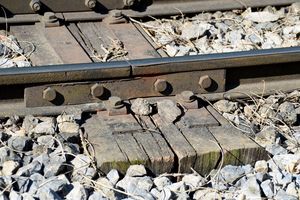KANBrief 1/21

The standard of protective measures that must be taken at the workplace during activities involving hazardous substances must correspond to the state of the art. According to the definitions of the German Ordinance on hazardous substances (GefStoffV), the state of the art is the state of development of advanced processes, equipment or methods of operation that justify the assumption that a measure is suitable in practice for protecting worker safety and health. Recommended course of action for determining the state of the art can be found in the Technical Rules for Hazardous Substances (TRGS) 460.
The GefStoffV requires the employer to prevent employees from being exposed to risks caused by hazardous substances. Should this not be possible, employees’ exposure to these substances must be reduced to a minimum in accordance with the state of the art. The second strategy for protection specified in the GefStoffV is based on compliance with occupational exposure limits.
Compliance with the TRGS technical rules gives rise to a presumption of conformity with the GefStoffV. At the same time, as stated in the foreword of each TRGS, these technical rules are intended as a description of the state of the art. The state of the art is however the result of a development implemented in practice by companies that are ahead of the curve. This development is not always reflected immediately in the regulations.
This dynamic progression of the state of the art often gives rise in practice to a legal problem, namely that many of the affected companies are able to observe the state of the art only at considerable expense, if at all. Moreover, technical rules of this kind do not exist for each and every subject.
As a result of this situation, in circumstances where assessment criteria (concentrations specified in TRGS technical rules for triggering measures or limiting the exposure (e.g. state of the art), TRGS 402, (16) 2) cannot (yet) be observed, a further level of requirements has emerged in practice for protective measures to be taken in respect of hazardous substances: the customary modes of operation and procedures, which are described in the TRGS 460 technical rules. These rules constitute proven combinations of individual measures that are used in the sector concerned but do not necessarily represent the state of the art.
In contrast to the state of the art, which reflects the progress made by advanced companies, the TRGS 460 technical rules are based on the standard that many companies reach when applying the legislation. The rules do not however take account of companies exhibiting deficits in this respect. Examples of the customary modes of operation and procedures can be found in the TRGS 559 technical rules concerning dust containing quartz and the TRGS 504 technical rules (now withdrawn) concerning activities involving exposure to respirable and inhalable dust.
The removal of baseplates (metal plates upon which the rails rest) from railway sleepers is a clear example of the gap between the state of the art and customary procedures in industry (M. Hagmann et al., 2017. Exposure to PAH during recycling of railway sleepers and thermal remediation of contaminated soil). The customary procedure in the industry is for baseplates to be removed from the sleepers manually in the open air or in partially enclosed areas, either on the ground or at forklift height. Following an intervention by the labour inspectorates in Germany prompted by violation of the occupational exposure limits for polycyclic aromatic hydrocarbons (PAHs), a procedure employing telescopic arms was developed which can be controlled remotely from a cabin equipped with air conditioning and safety ventilation. This procedure now constitutes the state of the art.
A solution in which baseplates are removed automatically by a machine has not yet been implemented in practice. It follows that such a procedure cannot yet be termed the state of the art, although it would certainly be the procedure giving rise to the lowest exposure.
The European OSH Framework Directive and the German Occupational Health and Safety Act (ArbSchG) both require consideration to be given to the state of the art in the measures determined by the risk assessment. In contrast to the GefStoffV, the EU directives specifically governing hazardous substances do not address the state of the art.
To resolve the problems associated with its implementation in practice, the state of the art must be interpreted with respect to practical applicability. The state of the art need not necessarily constitute an optimum solution; at the same time however, it should not be substituted by “customary practice” in industry. The resulting standard generally lies above that normal in industry. Several possible solutions for better implementation in practice are conceivable:
As in EU regulations, the employer could be obliged to take account of the state of the art when determining measures as part of the risk assessment.
During the design of new installations, the employer could be obliged to implement the state of the art. Grandfathering or a dedicated state of the art for legacy plants and retrofits to them may be necessary in order to prevent a continual requirement for technical adaptation. Other adjustments may continue to be necessary, such as organizational changes and proportionate structural or technical changes.
Ultimately, it would be necessary to determine whether the state of the art is to be required as “the sole best solution” for implementation, or whether it also requires more extensive practical validation.
Until a target standard exists, for example in the form of TRGS technical rules, i.e. assessment criteria, occupational safety and health in practice will continue to face the challenge of defining, in each individual case, the standard of protective measures actually required.
Torsten Wolf
torsten.wolf@cityweb.de
Michael Born
michael.born@bad-gmbh.de
The authors are chairs of the working group for the development of TRGS 460.